By Tom Wells on May 23, 2021 3:17:00 PM
Workplace inclusion helps employees of all ethnicities, backgrounds, religions, and sexual orientations thrive and feel safe in the modern workplace, but not only that. Diverse teams also produce better results and diversity and inclusion attract and retain the best talent. But what makes some work environments more inclusive than others?
Some HR and talent management influencers believe that true workplace inclusion is top-down; workplace inclusion must be embedded in the DNA of the company or written into the company’s core values.
But before we move on, what is the definition of diversity in the workplace? Organizational diversity means that your employees come from different backgrounds, and have different characteristics, viewpoints, and skills. Effective workplace inclusion means that you understand that each individual is unique, and you recognize their individual differences and praise them. These differences can be along the dimensions of race, ethnicity, gender, sexual orientation, socio-economic status, age, physical abilities, religious beliefs, political beliefs, or other ideologies.
Other talent managers think that workplace inclusion can be improved over time with strategies like diversity workshops to raise awareness. So what makes a genuinely inclusive environment? And how can companies learn from others championing diversity and inclusivity?
To learn more about this topic, download this free guide on How to manage language and cultural diversity in the workplace.
Why is workplace inclusion important?
Diversity and inclusion seem to go hand in hand. Or do they? There is a lot of buzz surrounding making workplaces more diverse. This often means making hiring processes as transparent and open as possible. But is this the same as workplace inclusion?
Workplace diversity does not equal workplace inclusion
Organizations often equate workplace diversity with inclusion. However, key thought leaders have shed light on some crucial differences between workplace diversity and inclusion.
“Diversity and inclusion are not one and the same, and neither happens through osmosis. To make employees feel more included, appreciated, and safe in the workplace, initiatives must be targeted to achieve specific results.”- Karima Mariama-Arthur, CEO and founder of WordSmithRapport speaking in Forbes.
“We often forget the ‘I’ in the D&I conversation. The challenge is in having a culture where all employees feel included. It’s a major investment to bring talent into your organization, so why bring them in if they’re not happy when they get here? You’ve got to get the inclusion part right.” - Johnny C. Taylor, Jr., SHRM-SCP, president and chief executive officer of the Society for Human Resource Management speaking in SHRM.
This makes workplace inclusion efforts important in their own right. It is not enough to just hire for diversity. Organizations should incorporate inclusivity as a key company goal. This will increase employee well-being and benefit the company over time.
Inclusive workplaces attract and retain the best talent
Nowadays, top talent sees the workplace as an extension of their lifestyle; if their core values are not reflected in those of the company, it is unlikely that that employee will thrive in that atmosphere:
"In a race for talent, an inclusive culture can really draw people in and make them stay if it's done right. And today, it is a make-or-break for some individuals," said Deborah DeHaas, vice chairman and chief inclusion officer of Deloitte.
Her comments followed a Deloitte study that found 72 percent of workers would leave a company to seek a more inclusive one. Almost one-quarter of respondents had already moved companies for this reason.
The bottom line: Inclusion is a deal-breaker, particularly for millennials, when it comes to choosing a workplace.
Diverse teams produce better results
This should read diverse teams that feel included produce better results. Kristel Kruustük, founder and CEO of tech company Testlio, has created a company where 40% of all hires are female. This is no mean feat in a typically male-dominated sector. Kristel is a major proponent of workplace diversity:
“At Testlio, we've strived to make diversity part of our competitive advantage from the very beginning. It’s a research-supported strategy: Gender-diverse companies are 15 percent more likely to outperform their peers, according to a McKinsey study. Ethnically diverse companies are even more likely to outperform the competition.” - Kristel Kruustük speaking in Entrepreneur.
This really underscores the business case for hiring diverse talent.
10 actionable workplace inclusion tactics
Before talking about global strategies, it’s a good idea to do a personal inclusion audit. This can help you understand things like the language you use, your unconscious biases.
Courtney Seiter, Director of People at Buffer, a tech company known for its transparent culture, believes that inclusion is as much a personal challenge as it is one for businesses. She recommends first challenging yourself to be more inclusive in work and life.
1. Challenge your unconscious bias
Eric Kandel won a Nobel prize for his work in the field of neuroscience. He believes that the majority of our free will actually takes place subconsciously. This leads to something called unconscious bias - a predisposition to see a situation in a certain way.
One unconscious bias is the classic gender role association: MALE = WORK and FEMALE = HOME.
We may think that in modern society this crude assumption no longer holds true. So I tested this out by taking an implicit association test. It turns out that I have a slight association with male and career and a slight association with female and family.
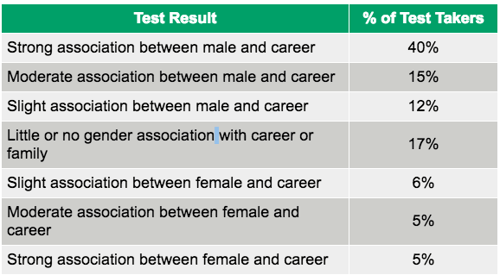
This test can also be done with a focus on race as well. Give these tests a go! The results may surprise you. Being aware of unconscious biases shows that even if an excellent workplace inclusion strategy is in place, we still may be predisposed to see things in a certain way.
In the recruiting space, apps like Blendoor aim to remove unconscious bias altogether by removing applicant information such as gender and age.
2. Use inclusive language
Buffer challenged their use of language. The tech organization used to use the word hacker for computer programmer job descriptions. Only 2% of applicants were female. After some research, they found that more inclusive language may encourage more women to apply.
Another simple example is using greetings like “hey guys.” this is considered non-inclusive as it is male-centric, i.e., assuming that a male greeting should be the norm.
Such use of language, particularly hyper-casual language may seem small and unimportant. But with a little effort, it’s easy to adapt. And in case you get lost, there is also this awesome guide on inclusive language.
And for guys, check out this cool flowchart from Techlady Mafia:
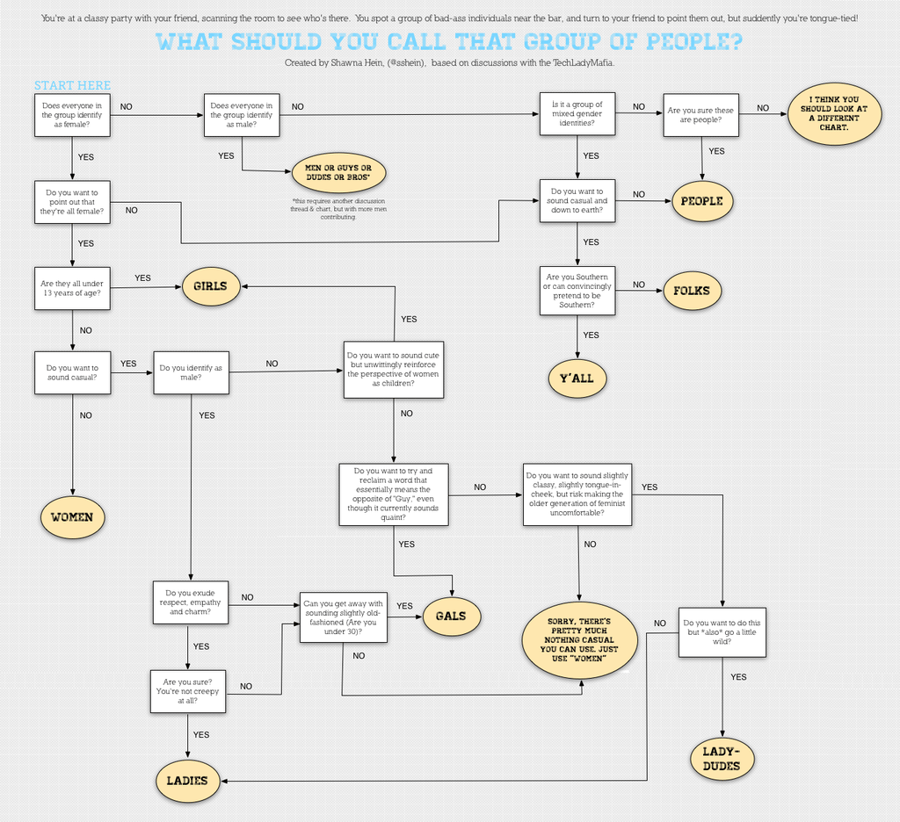
Remember co-workers have the right to be addressed how they want. It’s not up to you to question this.
3. Check your social media activity
What are the demographics of your followers on Twitter? Anil Dash, CEO of Glitch, asked himself this very question as was surprised to learn that almost 80% of his followers were male.

In response to this, he came up with a novel solution. He spent a whole year only retweeting women. He found the experience positive and speaking in the same article, offered the following advice. “If you’re inclined, try being mindful of whose voices you share, amplify, validate and promote to others.” Small changes in whom you retweet and follow can boost minority voices, advancing important often underrepresented discussions.
Check out your Twitter analytics to see your follower demographics. The following inclusion strategies apply to the workplace as a whole.
4. Educate company leadership
There are two reasons why C-level leadership and management should attend diversity and inclusion workshops: firstly, it's one of the least diverse areas of work, dominated by white males. Secondly, leaders can play a crucial role in shaping company values. If diversity goals are set top-down, it is likely they can be implemented company-wide. They are responsible for decision-making within an organization.
The Economist surveyed employees from various organizations and found that one-third of respondents agreed that LGBT inclusion in their companies had improved. While 63 percent felt it is the role of C-suite and senior management to improve the situation.
American Express has made diversity and inclusion mandatory for executives at vice-president and above. Dianne Campbell, vice president of global diversity and inclusion at American Express in Washington, D.C, has said that “It’s the experience that the leader is creating that is going to make or break your D&I initiatives.”
5. Build a mentoring community
Every great community needs mentors. Mentors voice concerns and overcome challenges for their community members. PayPal Unity is a program for female employees in their workforce that hosts events to inspire them and make them feel valued.
6. Create cultural events
Celebrate the diverse nature of your team. Cultural activities can be anything from doing a weekly cook-out, asking each member of your team to cook a meal from their own country.
7. Collect inclusion feedback regularly
You need to listen to your organization. Try to add regular feedback events or town hall-style meetings to find out what is working and what is not. Speak to community mentors and make sure they have ample opportunity to raise issues related to inclusion. Also, arrange one-on-one sessions between employees and their community members to ensure they have a safe space to share their feedback.
8. Remember remote workers

40 Lessons From 4 Years of Remote Work
Buffer manages company retreats even though they are a remote organization. This poses significant logistical challenges. Remote companies are a legitimate business structure and look highly likely to become the workplace norm in the next few years. This pushes the boundaries of what it means to work for the same company.
9. Language training empowerment
Today’s workforce is global and the working language is English. Online education providers help non-native speakers acquire confidence. Talaera has made it its mission to empower employees all around the world through dedicated language training.
10. Create core company values
Does your company have core values? If so are they actually expressed somewhere where everyone can easily be accessed. Applicants check company values and mission statements before applying. Check out how Buffer outlines their company values front and center.
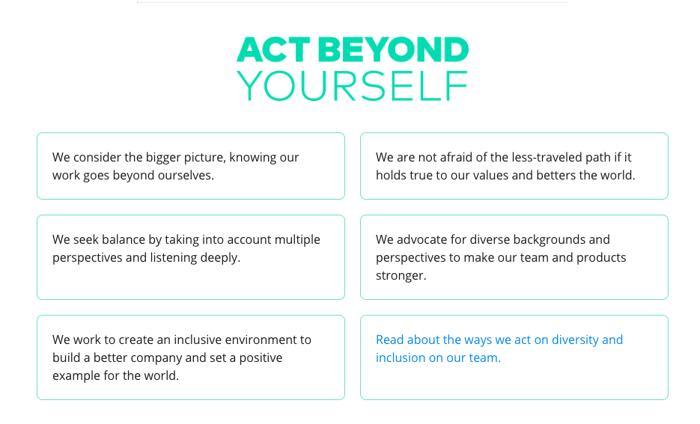
Workplace inclusion can unlock your company’s true potential
Workplace inclusion is something every workplace should strive for. It ultimately leads to increased productivity and employee well-being. It’s worth remembering that a diverse workplace does not necessarily lead to an inclusive one. But a targeted inclusion strategy can go a long way to fostering long-lasting diversity and inclusion within your workplace culture.
Build your team based on inclusive and effective communication. At Talaera, we specialize in business English communication skills, and we can help your team grow united through inclusive and effective communication. Through 1:1 sessions, group courses, workshops, or private webinars, your team will get 100% personalized training with the right content and materials to achieve your goals. Learn more here.
Interested in getting the best offers and receiving free content on Business English communication? Subscribe to our newsletter and we will keep you in the loop with offers, free events, and learning materials!
Continue reading:
- How To Manage Diversity and Inclusion in The Workplace
- Managing Across Cultures [Webinar on Demand]
- A Quick Guide To Asking Better Questions In Cross Cultural Workplaces
- 4 Tangible Benefits of Having a Diverse Workforce
- 8 Companies With Great Company Culture Examples
- 4 Examples of How Companies Effectively Engage Their Employees
- Top 5 Perks Employees Enjoy at a Multinational Company
- 150+ Useful Email Phrases That Will Make Your Life Easier
[This article was originally published in 2019 and recently updated]


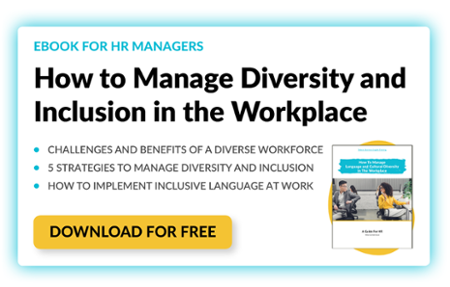
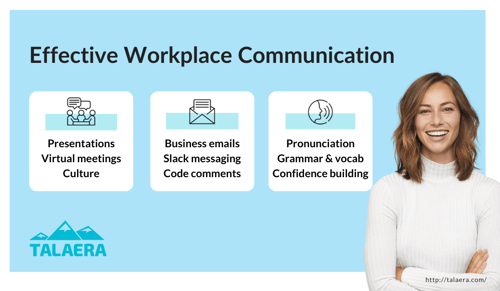
comments